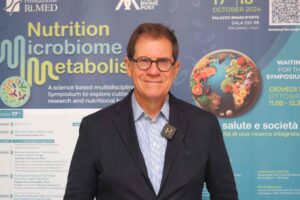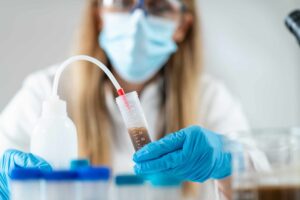Table of Contents
ToggleWhat is already known on this topic
Antibiotics can fight bacterial infections, saving millions of lives each year. But these medicines can also kill the beneficial bacteria that reside in our gut. Side effects of antibiotics include diarrhea, Clostridioides difficile infections and the development of allergic, metabolic, immunological, or inflammatory diseases.
What this research adds
Researchers have analyzed the effects of more than 140 antibiotics on the most common gut bacteria. Two widely used types of antibiotics — tetracyclines and macrolides — killed about half of the tested gut microbes. However, the researchers identified several non-antibiotic drugs that reduced the harmful effects of antibiotics on gut microbes, without compromising the antibiotics’ efficacy against pathogens.
Conclusions
The findings shed light onto the effects of antibiotics on gut microbes and suggest new strategies to mitigate some of the collateral damages of antibiotic therapies.
Antibiotics save millions of lives each year by fighting bacterial infections, but these medicines can also kill the beneficial microbes that reside in our gut, causing long-term health problems. Now, researchers have analyzed the effects of more than 140 antibiotics on the most common gut bacteria.
The findings, published in Nature, suggest new strategies to mitigate some of the collateral damages of antibiotic therapies.
The communities of microbes that live in our intestine help us to use nutrients more efficiently and prevent pathogenic bacteria from settling in the gut. Antibiotics inhibit the growth of pathogenic bacteria, but can also damage the gut microbiota. Side effects of antibiotics include diarrhea, Clostridioides difficile infections and the development of allergic, metabolic, immunological, or inflammatory diseases.
“So far, our knowledge of the effects of different antibiotics on individual members of our gut microbial communities has been patchy,” says study senior author Athanasios Typas at the European Molecular Biology Laboratory.
To better understand the effects of antibiotics on gut microbes, researchers led by Typas and Lisa Maier at the University of Tübingen analyzed how each of 144 antibiotics affected the growth and survival of bacterial strains that are commonly found in the human gut.
Collateral damage
First, the researchers determined the concentrations at which a given antibiotic would affect each bacterial strain. The experiments revealed that two common types of antibiotics — tetracyclines and macrolides — not only blocked the growth of nearly all tested gut bacteria, it also killed many of those bacterial species.
In particular, the team found that doxycycline, erythromycin, and azithromycin, which are commonly used to fight bacterial infections, killed several gut microbial species. About half of the tested microbes did not survive treatment with tetracyclines and macrolides. Killed bacteria were eliminated from microbial communities more readily than microbes whose growth was only inhibited, the researchers found.
“We didn’t expect to see this effect with tetracyclines and macrolides, as these antibiotic classes were considered to have only bacteriostatic effects — which means that they stop bacterial growth, but don’t kill bacteria,” says study co-first author Camille Goemans. “Our experiments show that this assumption is not true for about half of the gut microbes we studied.”
Antidote drug
Next, the team set out to reduce the collateral damage of tetracyclines and macrolides. Previous research from Typas’ team has shown that drugs interact differently with different bacterial species. “We therefore explored whether a second drug could mask the harmful effects of antibiotics on abundant gut microbes, but allow antibiotics to retain their activity against pathogens,” Typas says. “This would provide something like an antidote, which would reduce the collateral damage of antibiotics on gut bacteria.”
The researchers screened for drugs that inhibited the antibiotic activity against Bacteroides but not against pathogenic species. They identified several non-antibiotic drugs, including an anticoagulant medicine called dicumarol, that reduced the harmful effects of antibiotics on gut microbes, without compromising the antibiotics’ efficacy against pathogens.
“Our approach that combines antibiotics with a protective antidote could open new opportunities for reducing the harmful side effects of antibiotics on our gut microbiomes,” Maier says. The researchers warn that no single antidote can protect all the bacteria in our gut. However, Maier notes, “this concept opens up the door for developing new personalized strategies to keep our gut microbes healthy.”












